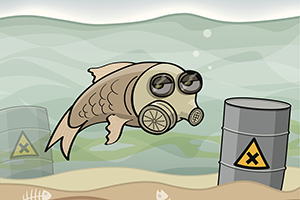Choline: Little-known nutritional fact—according to a recent article in Science Daily, it’s estimated that more than 90% of Americans are not meeting the recommended daily intake of choline. We know that choline is a dietary precursor to acetylcholine, an essential neurotransmitter. In fact, certain dementia drugs are designed to amp up brain levels of acetylcholine. Adequate choline has now been recognized as essential for expectant moms; I routinely prescribe phosphatidylcholine supplements during pregnancy to assure adequate fetal brain development.
Now researchers have confirmed a link between inadequate choline intake and “a constellation of problems”—brain abnormalities, as well as enlarged livers and hearts. Moreover, there was a propensity to weight gain and blood sugar abnormalities in mice fed a choline-deficient diet.
Part of the answer may be that choline helps keep homocysteine levels low enough to minimize its toxic effects.
The study authors take issue with current dietary guidelines for choline intake which, they claim, even though most Americans don’t attain them, are insufficient for optimal metabolism.
Vegetarians may be especially prone to inadequate choline intake since they eschew rich sources like meat (especially organ meats), eggs, and poultry. Soy and Brussels sprouts may deliver some choline, but most Americans would do well to supplement, especially if embracing a plant-based diet or during pregnancy.
Live fast, die young? We’ve all heard the aphorism. But new research suggests that, when it comes to thyroid function, the old saw may be true. Scientists have recently discovered a paradox: While hypothyroidism is associated with a host of health problems, including weight gain and high cholesterol, people with exceptionally long life spans often possess one of the hallmarks of low thyroid—an elevated thyroid stimulating hormone (TSH).
When TSH is high, it’s often a tip-off that thyroid function is suboptimal. Endocrinologists have progressively lowered the TSH threshold for subclinical hypothyroidism from 10, to 5, and recently, as low as 4. Some zealous integrative doctors rush to treat anyone with a TSH less than 3 or even lower. It’s often life-changing, restoring energy and vitality, frequently facilitating weight loss and alleviating depression. For some, it’s like natural Ritalin.
On the other hand, these researchers found that a slightly high TSH in older individuals—which might tempt some doctors to prescribe thyroid hormone replacement—was a hallmark of longevity. They determined that the thyroids of these seniors was less responsive to TSH, causing it to rise accordingly while normal thyroid function was preserved.
Could it be that a slightly lower metabolic rate confers a survival benefit? “Slow and steady wins the race”, they say. Certainly seems to apply to the longest living terrestrial animals—those big lumbering tortoises that can live to 150.
The findings suggest we exercise caution in ordering thyroid for older individuals with a borderline TSH. For example, I now forego automatically reaching for the prescription pad for active 60-plus patients with a TSH of 5 or more who say they feel fine. Conservative prescribing also avoids the problem of prompting rapid heart rate—even atrial fibrillation—with excess thyroid stimulation in vulnerable seniors.
Sodium nitrite in foods: Sodium nitrite is used to prevent processed meats from assuming a grey pallor; it’s ubiquitous in conventional hot dogs, bacon, and luncheon meats. Knowledgeable consumers avoid it due to its tendency to form carcinogenic nitrosamines and bans have been proposed.
Now, yet another hazard has emerged with nitrite consumption: diabetes. French researchers report a 27% greater risk for type 2 diabetes in the highest consumers of dietary nitrites.
Nitrites are not to be confused with nitrates, present in beets, arugula, and other greens. These promote nitric oxide synthesis, which enhances circulation.
Toxic fish: “Forever chemicals” are in the news these days, as states take the lead in attempting to pass legislation to protect their citizens from the ravages of PFAS compounds.
Now it’s come to light that consumption of even moderate amounts of freshwater fish may pose health risks to consumers. Researchers report that “a single serving of freshwater fish per year with the median level of PFAS as detected by the U.S. EPA monitoring programs translates into a significant increase of PFOS levels in blood serum,” equivalent to a month’s worth of drinking water above the FDA threshold for PFAS contamination. These chemicals are notorious carcinogens and endocrine disrupters. They are even suspected of being “obesogens”—capable of altering the metabolism to produce insulin resistance and weight gain.
It’s even considered a social justice issue, because poor rural families often augment their diets by fishing locally. Their frequent consumption of catch from polluted waters is a health liability that their ancestors never could have envisioned.
I recall a baseball game I once attended at Target Field in Minneapolis. Besides being the only stadium I’ve ever been to that has a cozy fireplace (it’s cold in Minnesota in April and May!), I marveled at one of the local specialties offered at the food stand: walleye sandwiches! Not being a fan, I passed, but there’s an example of a lake fish that could pack a toxic burden.
Another that I’d forego is Tilapia, rated the 4th most highly-consumed fish in the US. It’s farmed in artificial ponds under conditions that are poorly regulated; much of our supply comes from China. And unlike species like herring, salmon, and tuna, tilapia is bereft of beneficial omega-3 fatty acids.
Sometimes, on an early morning run along New York’s East River Drive, I see fishermen trying their luck. Occasionally, they even reel in a catch! I’m told New York waterways are getting cleaner, but check out this advisory from the NY State Department of Health that advises women under 50, and especially those contemplating pregnancy, to never eat river-caught fish! Government reassurances notwithstanding, I think I’ll skip the monthly portion of certain less toxic fish that I’m allowed as an adult male. And hope that those fishermen are not restaurateurs.







